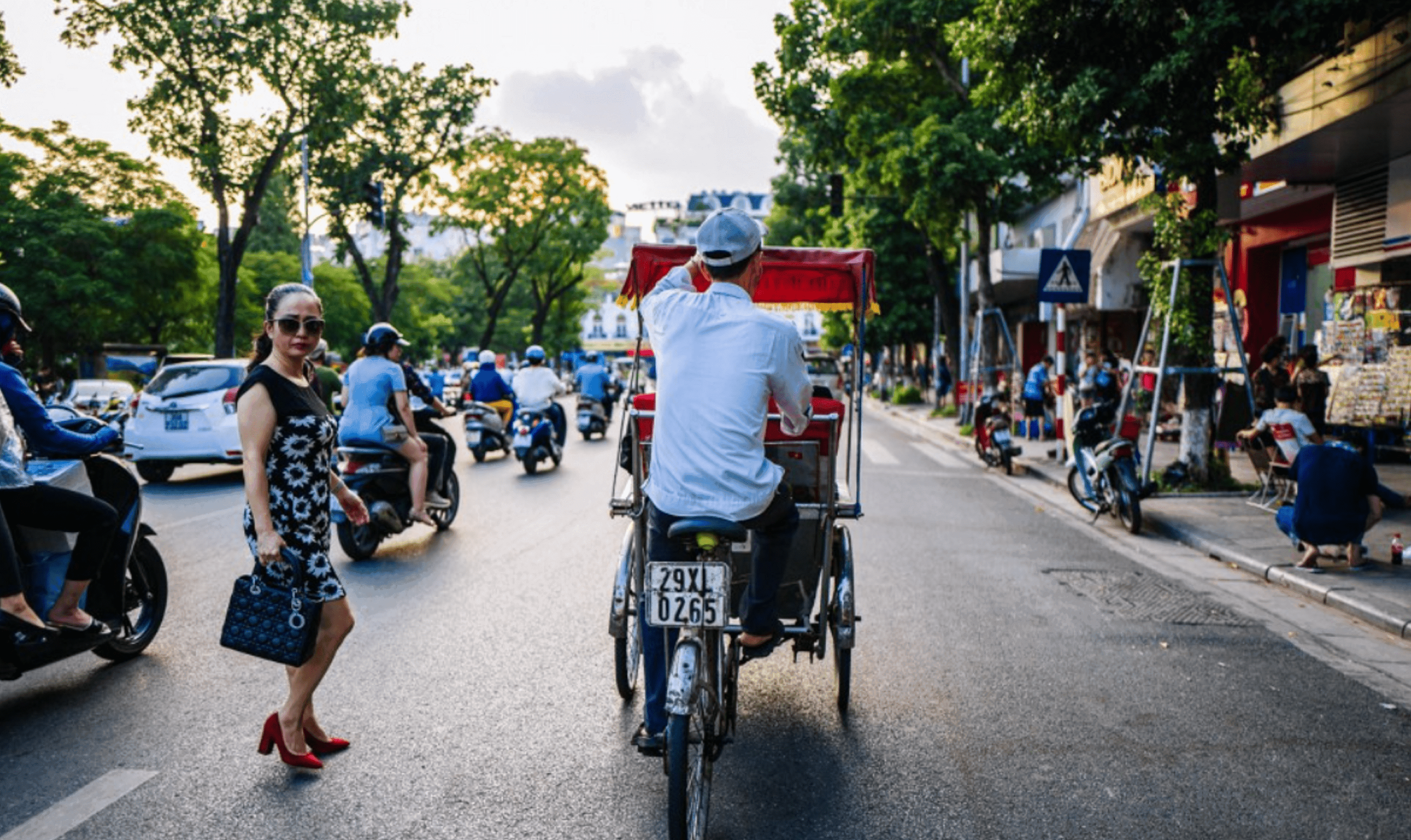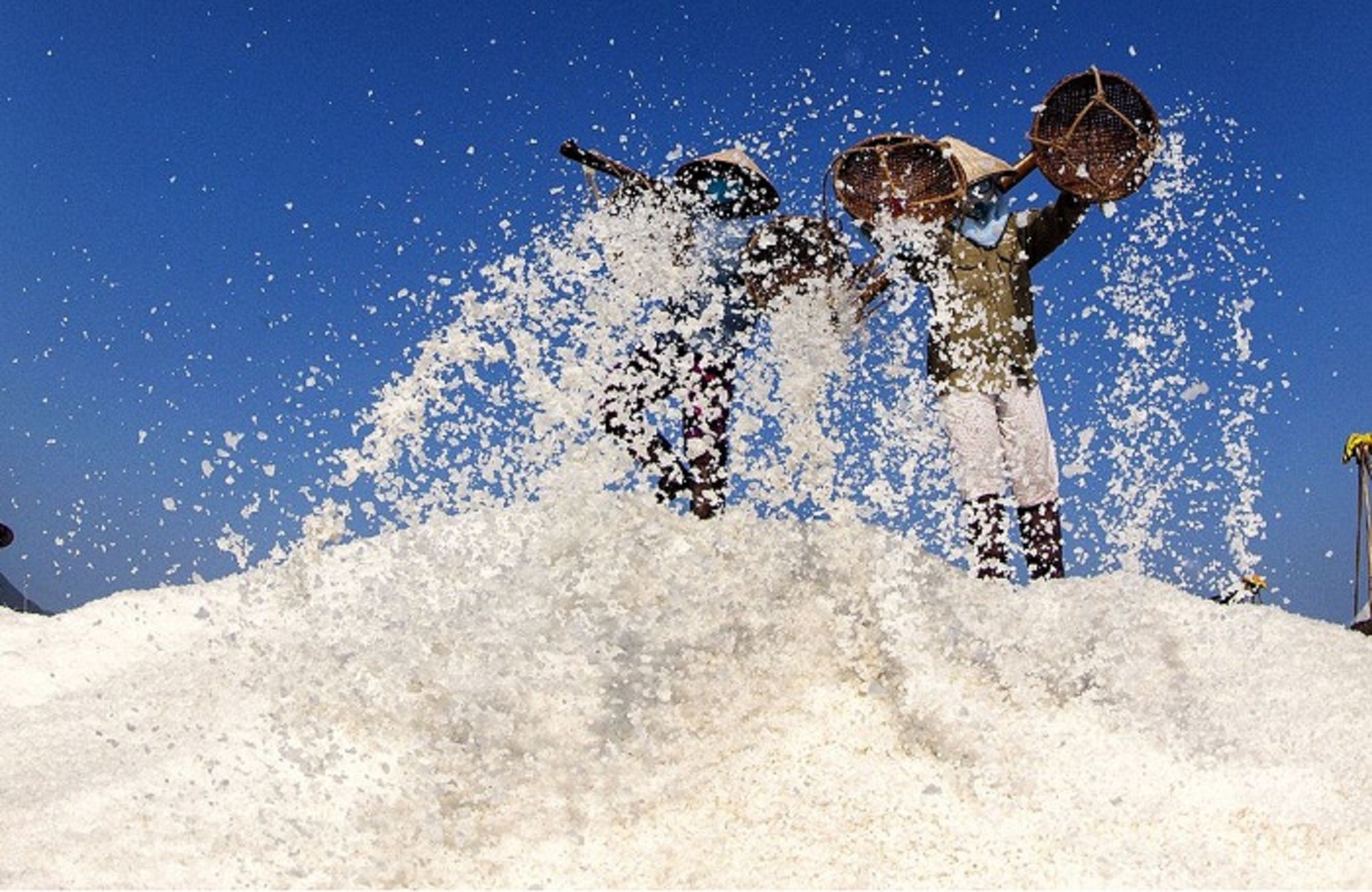Types of Vietnamese Coffee and How to Make It
Culture
5 minutes
Mar 14, 2024
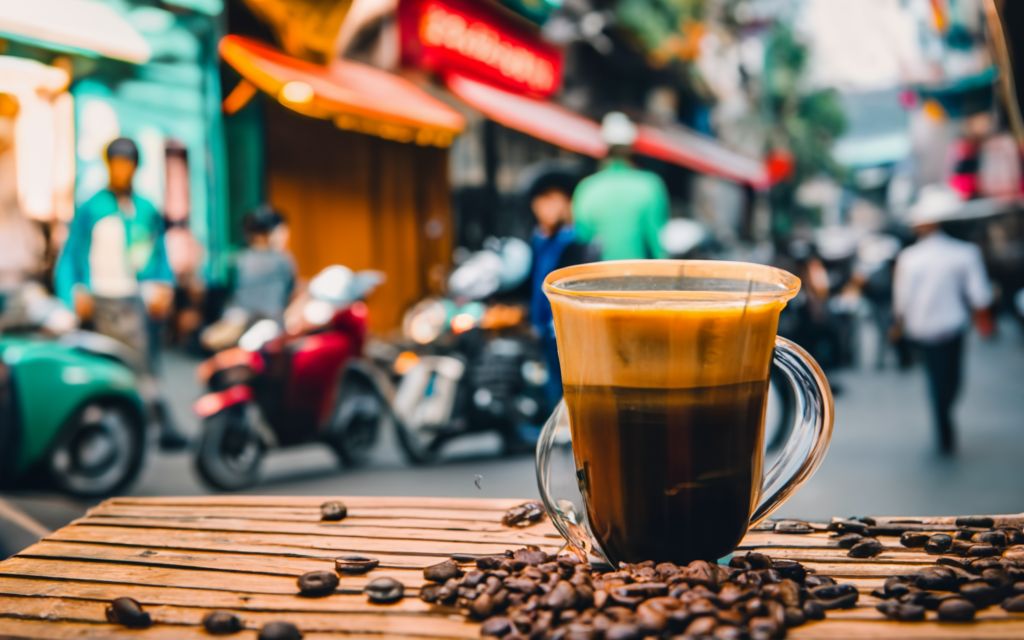
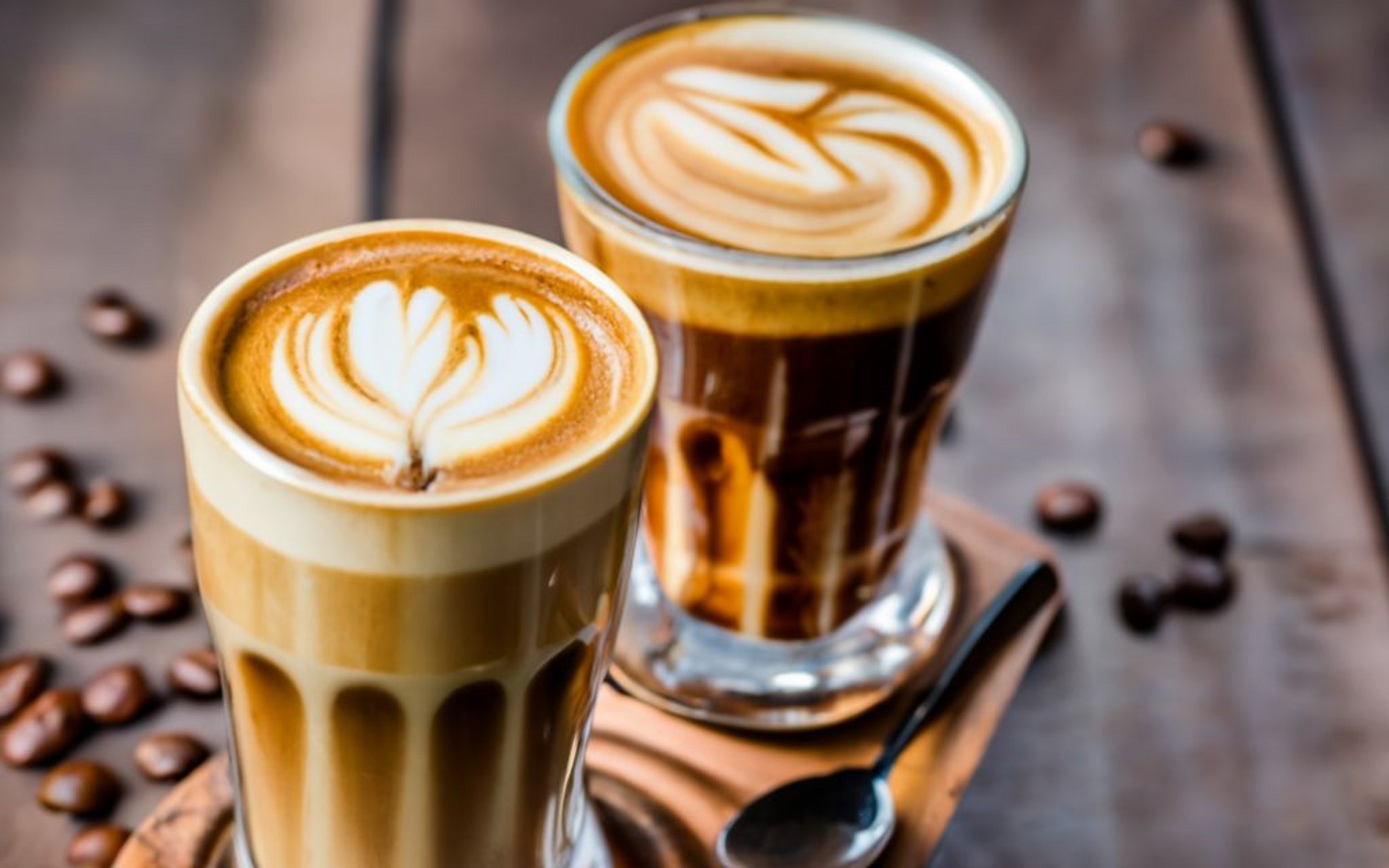
Vietnamese coffee is becoming increasingly popular among international travelers visiting Vietnam. Like beer and baguettes, Vietnamese coffee traces its origins back to colonial France.
Vietnamese coffee culture soon became a habit among the Vietnamese, who tried their own creative coffees such as coffee with egg yogurt or even fruit. Today, Vietnam is the world's second largest exporter of coffee and also the largest exporter of Robusta.
Introduction to Vietnamese Coffee
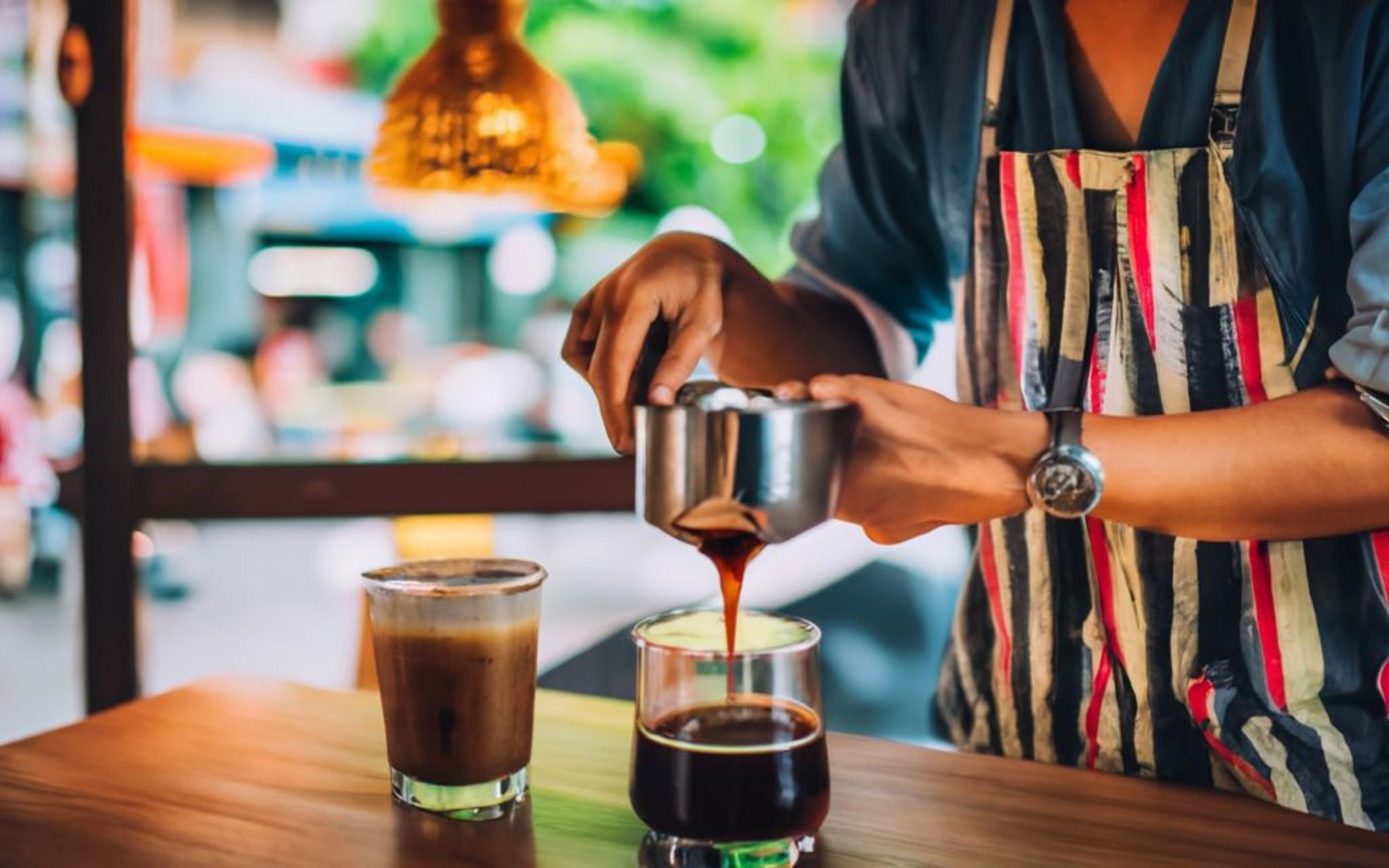
Vietnamese coffee actually means two things. Brewing method and traditional Vietnamese roast style. For example, using a pin drip filter, you can brew Italian-style roasted coffee beans in a Vietnamese-style way. But you can also brew a traditional Vietnamese roast with a foreign coffee machine.
In Vietnam, tradition dictates that Robusta coffee beans be roasted very darkly and elements such as salt, rice liqueur, butter, whiskey or fish sauce and sugar may be added. Adding additives can improve the flavor and flavor of bitter, hard Robusta beans. Flavors and aromas such as hazelnut and vanilla are regularly added.
Fillings such as beans, red beans, and roasted corn are common. They ensure that your strong coffee is slightly sweeter, stronger, and more profitable.
Vietnamese coffee brand
1. Filter coffee
- Vietnamese: Ca Phe Sua Nong (coffee with milk) Ca Phe Den Nong (black coffee)
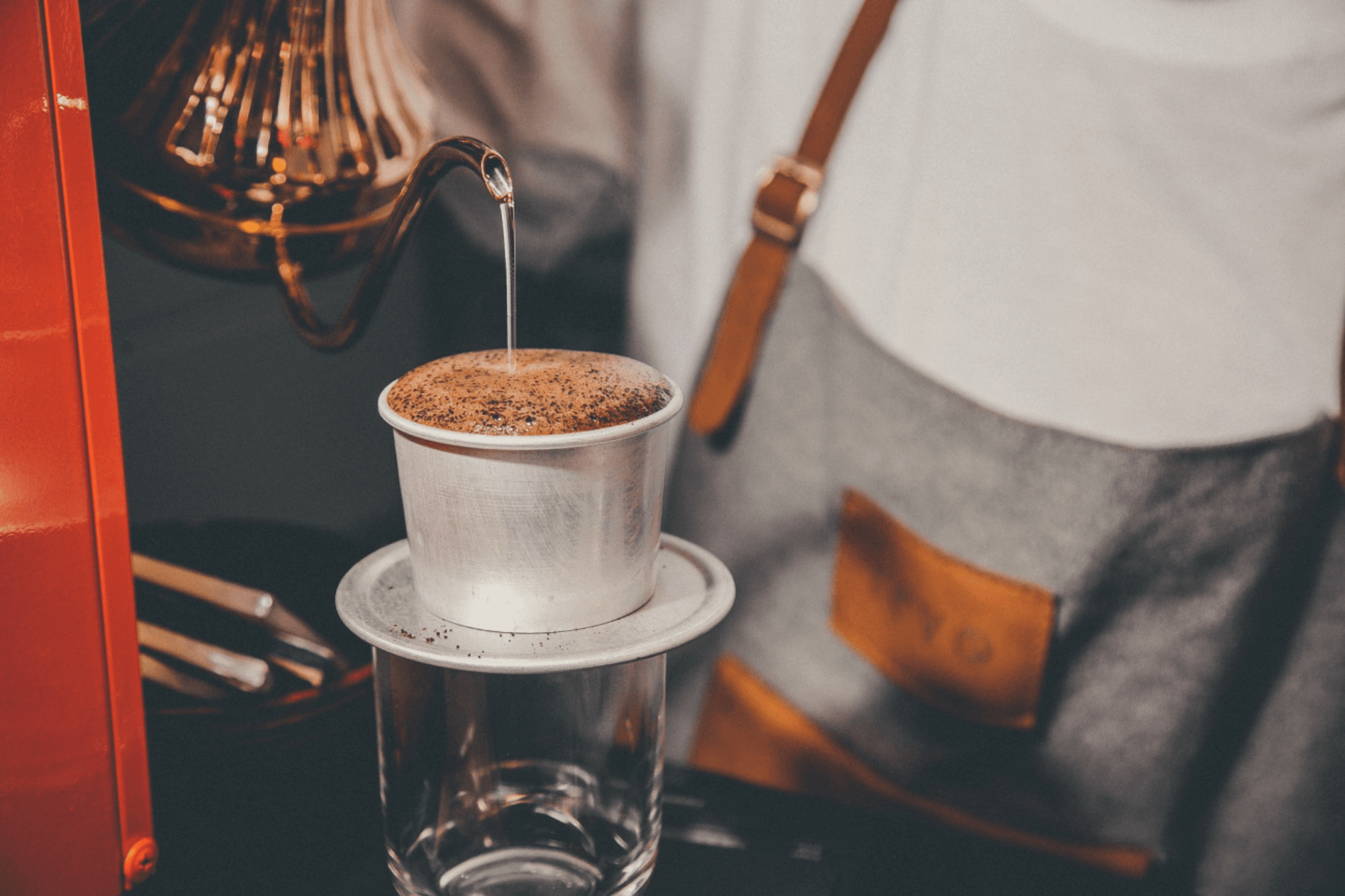
If you go somewhere in Vietnam to drink coffee, you've probably seen a metal coffee filter (pin filter). Typically, ground coffee beans are roasted in butter and added to this filter along with hot water. The coffee then drips from the filter into the glass below. Waiting for the coffee to finally brew is part of the entire experience of drinking coffee.
2. Iced coffee
- Vietnamese: Ca Phe Sua Da (Iced Coffee with Milk) Ca phe da (Iced Black Coffee)
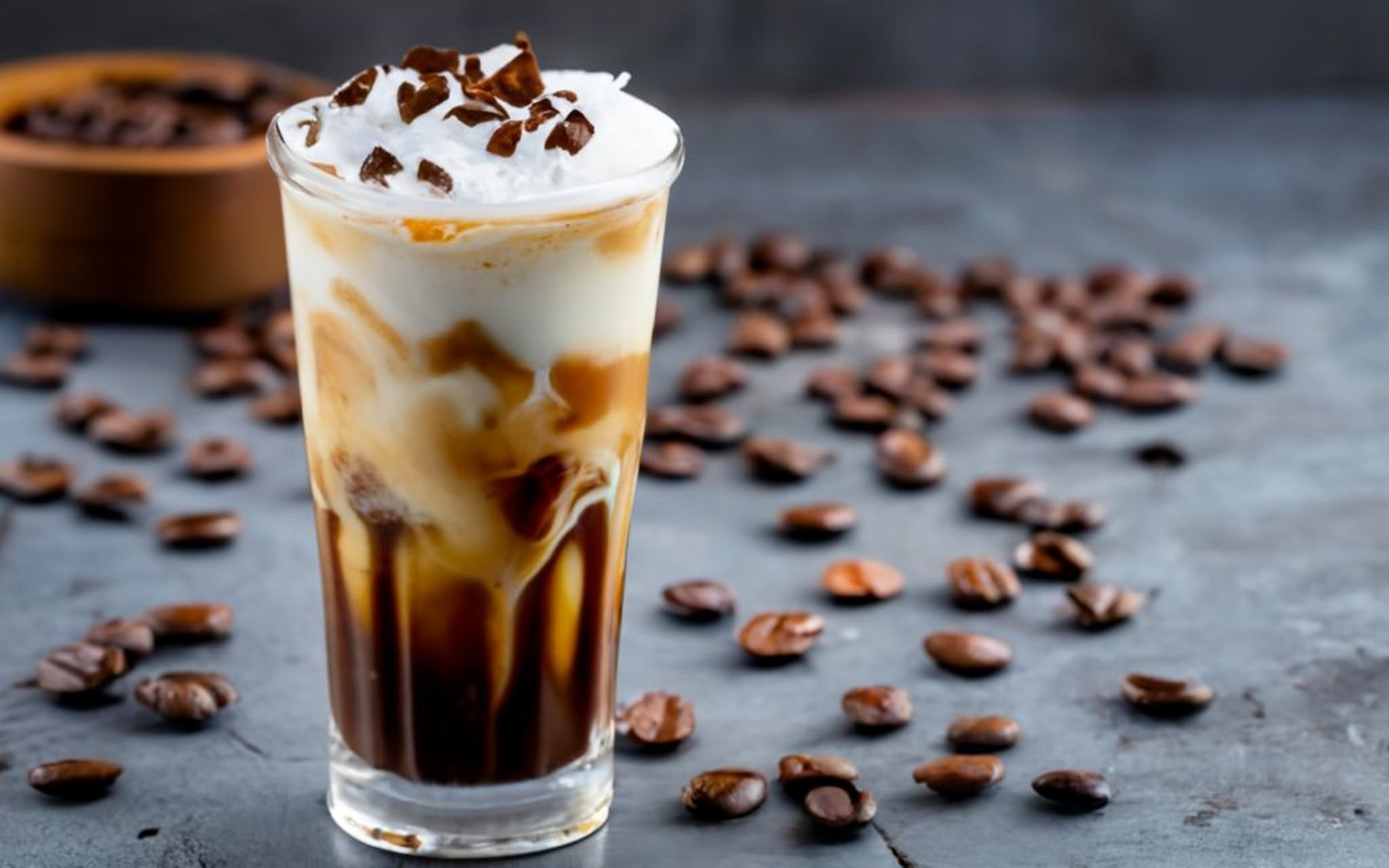
Another very popular Vietnamese coffee is iced coffee. Iced coffee is made the same way, first using a drip coffee filter. Once the coffee is brewed, mix the milk and coffee together and pour into a tall glass filled with ice.
3. Egg coffee
- Vietnamese: Ca Phe Trung
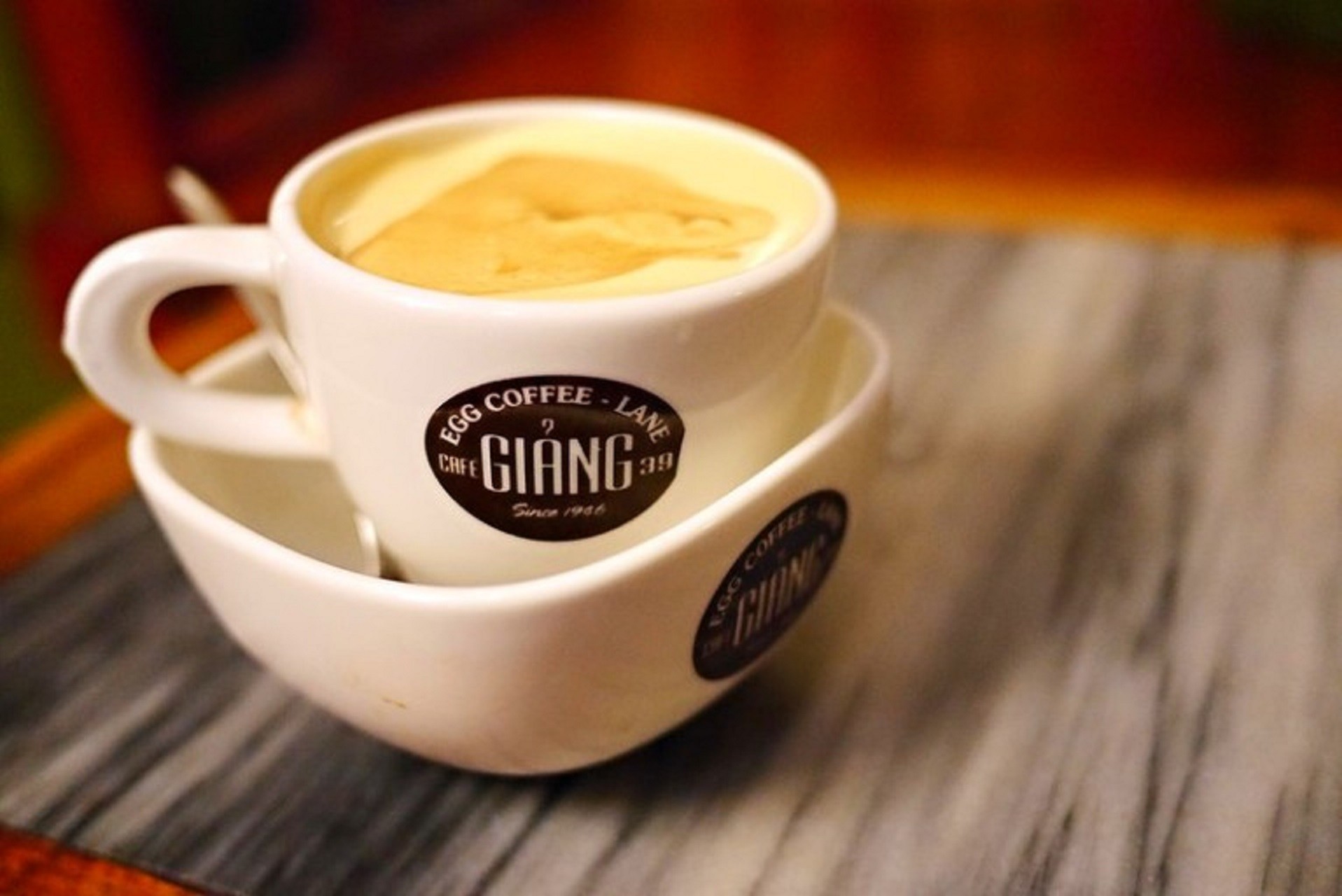
No, it's not coffee with eggs. This is a Vietnamese-style tiramisu made by adding dark coffee to the foam made by mixing egg yolk and condensed milk. Egg coffee, a Hanoi invention, was first created in the 1940s when milk was in short supply and egg yolks were an easy substitute.
4. Coconut Coffee
- Vietnamese: Ca phe cot dua
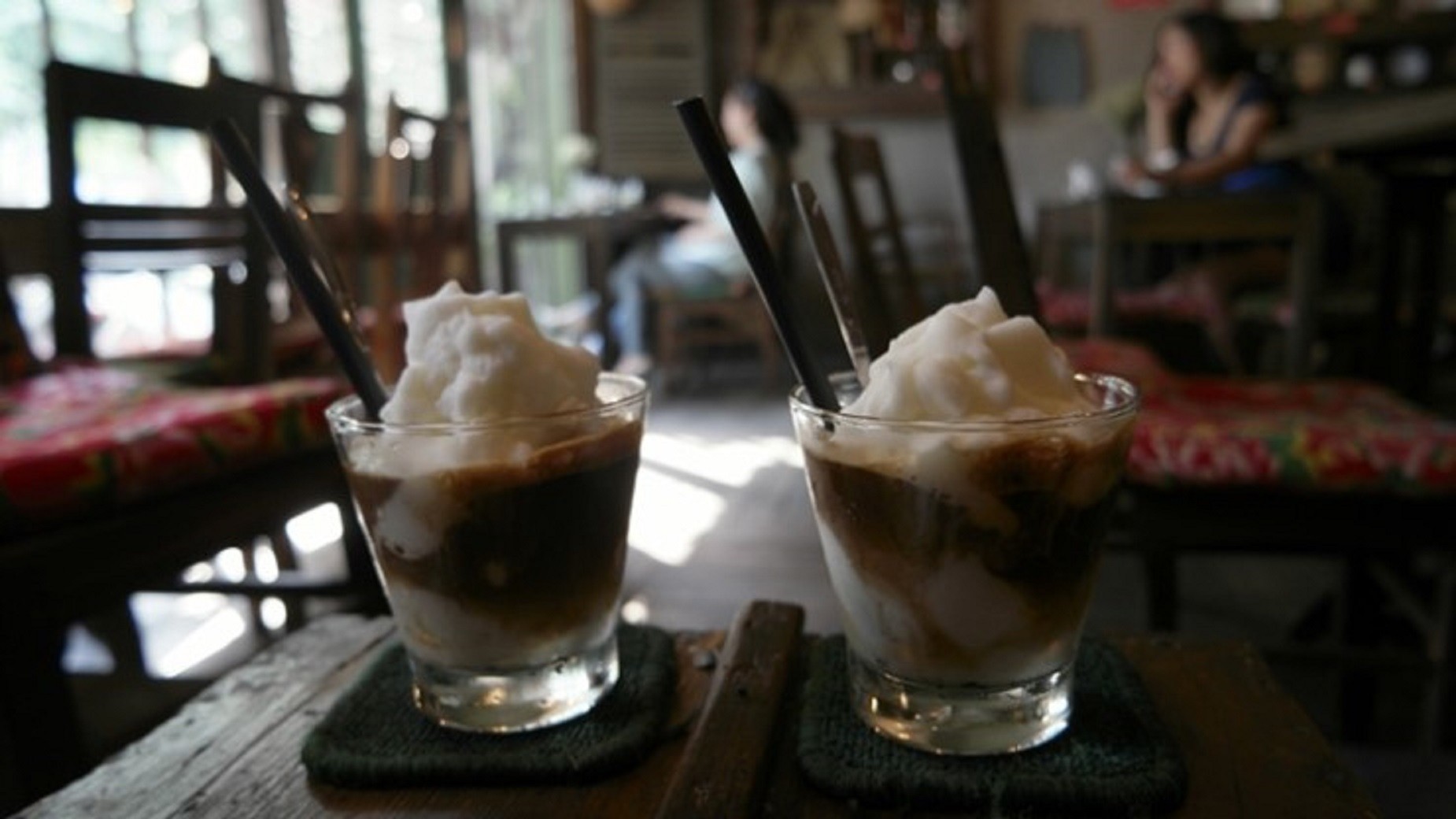
I'm not sure if this is a traditional coffee recipe. What is certain is that it has become popular among Vietnamese youth in recent years. Vietnamese coconut coffee is made in a shake form by mixing condensed milk, ice, and coconut milk. Some stores make it with brown coffee mixed with fresh milk and coconut milk.
5. Yogurt coffee
- Vietnamese: Sua chua ca phe
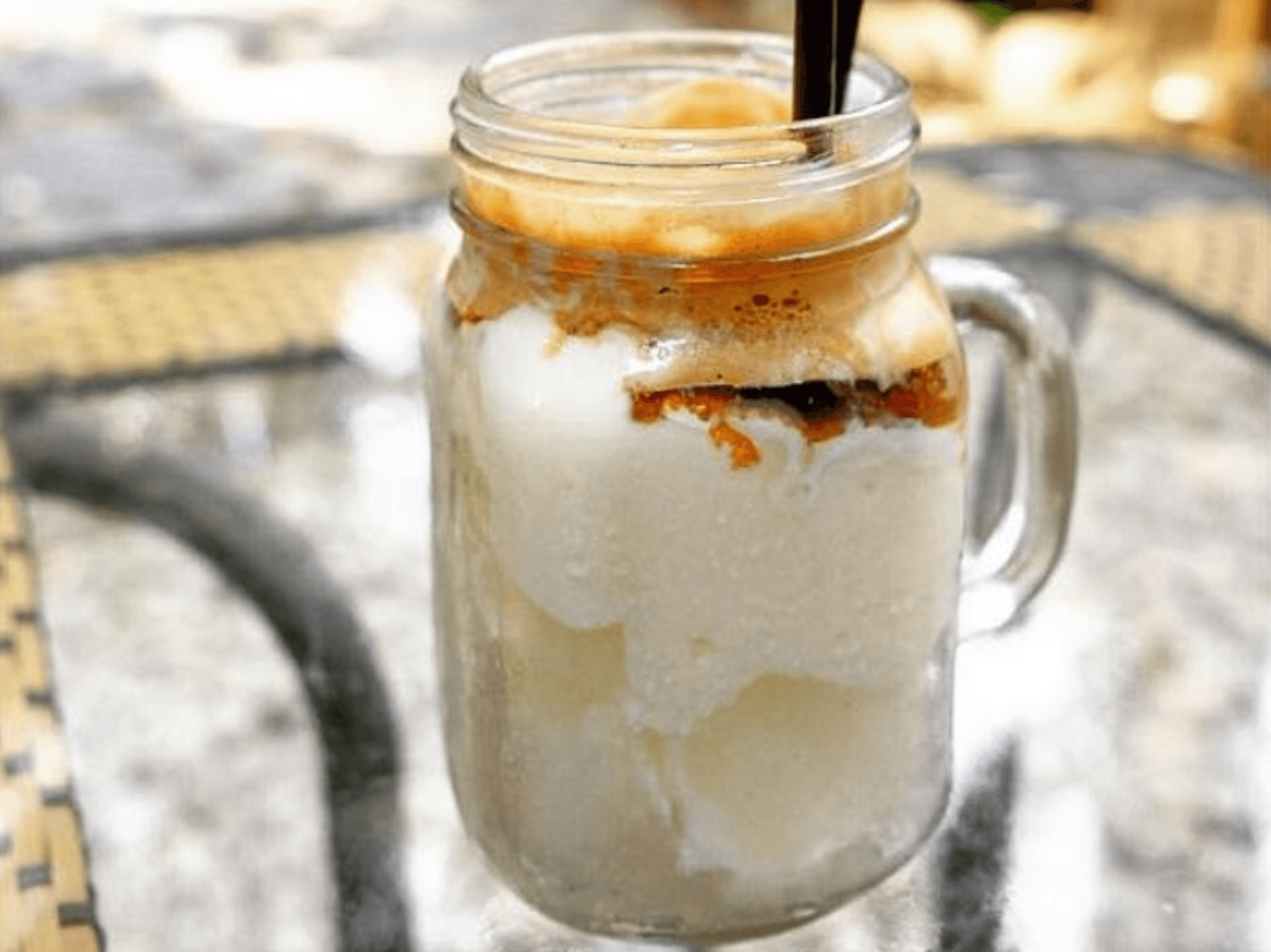
Yogurt, like coffee, was brought to Vietnam by the French during the colonial period and incorporated into local cuisine by the Vietnamese. Two French products were combined to create yogurt coffee. This drink is creamy and rich and can be served with a variety of toppings, including fresh fruit and fermented rice. This combination may sound strange, but it's surprisingly delicious when paired with a cup of black coffee.
6. Weasel Coffee
- Vietnamese: Ca phe chon

Weasel coffee is also known as civet coffee, kopi luwak, and even cat poop coffee. One of the most luxurious coffees in the world. Coffee beans are fed to weasels and later removed from their droppings for cleaning and processing. So you don't have to worry about poop getting in your coffee. This is important if you want to try coffee. The biggest difference is that the fermentation and flesh removal process takes place in the weasel's organs rather than machines.
This method of processing coffee beans for weasel coffee is also very controversial. Because the living conditions of these animals are not guaranteed everywhere. In some poorly managed farms, they are kept in small cages made of wire mesh, rarely fed coffee cherries instead of other foods such as insects, and live in filthy conditions.
Vietnamese coffee brand
- Trung Nguyen
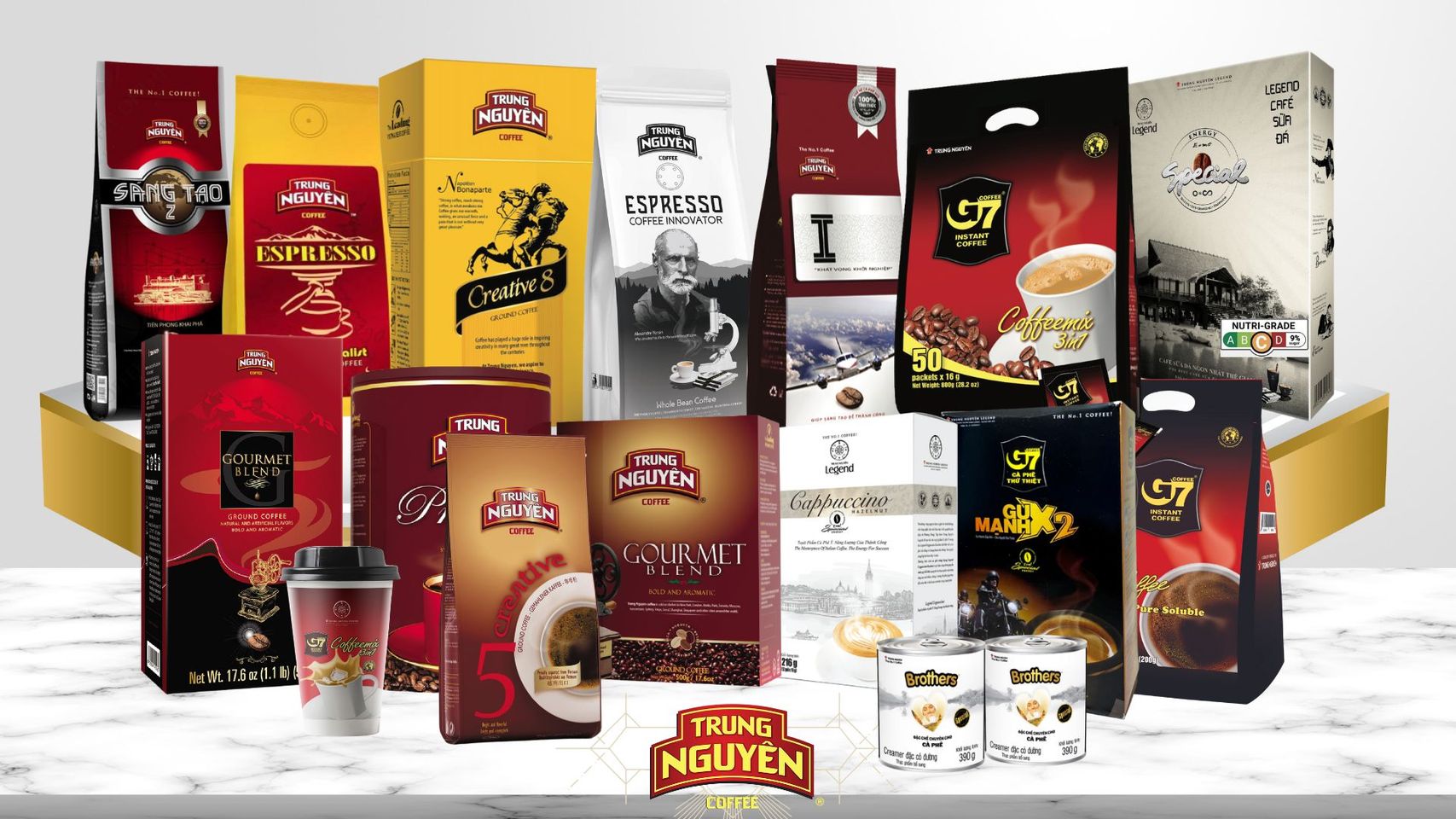
The biggest and most famous coffee brand in Vietnam is Trung Nguyen Coffee. It is exported to more than 70 countries around the world. They serve a variety of coffees, each processed in a different way or blended with coffee beans. There are three main types: roasted coffee, instant coffee, and weasel coffee.
G7 Instant Coffee – Despite being an instant coffee, G7 Instant Coffee still has a very strong taste. Unlike freeze-drying, coffee powder is dried and extracted directly from coffee beans. This will give you a much stronger taste and authentic aroma. G7 is known as the highest quality instant coffee in many Asian countries.
Trung Nguyen Roasted Coffee – This ground coffee powder is a truly traditional coffee with a rich taste and aroma that can even be found on the streets of Vietnam. The best way to make this is to use a drip filter and add the condensed mixture for flavor.
Premium Blends and Gourmet Blends – These coffees in particular have made Trung Nguyen famous around the world and are also its best-selling coffee products. You can also find this coffee in many coffee shops in Vietnam and other countries.
- Heirloom Coffee
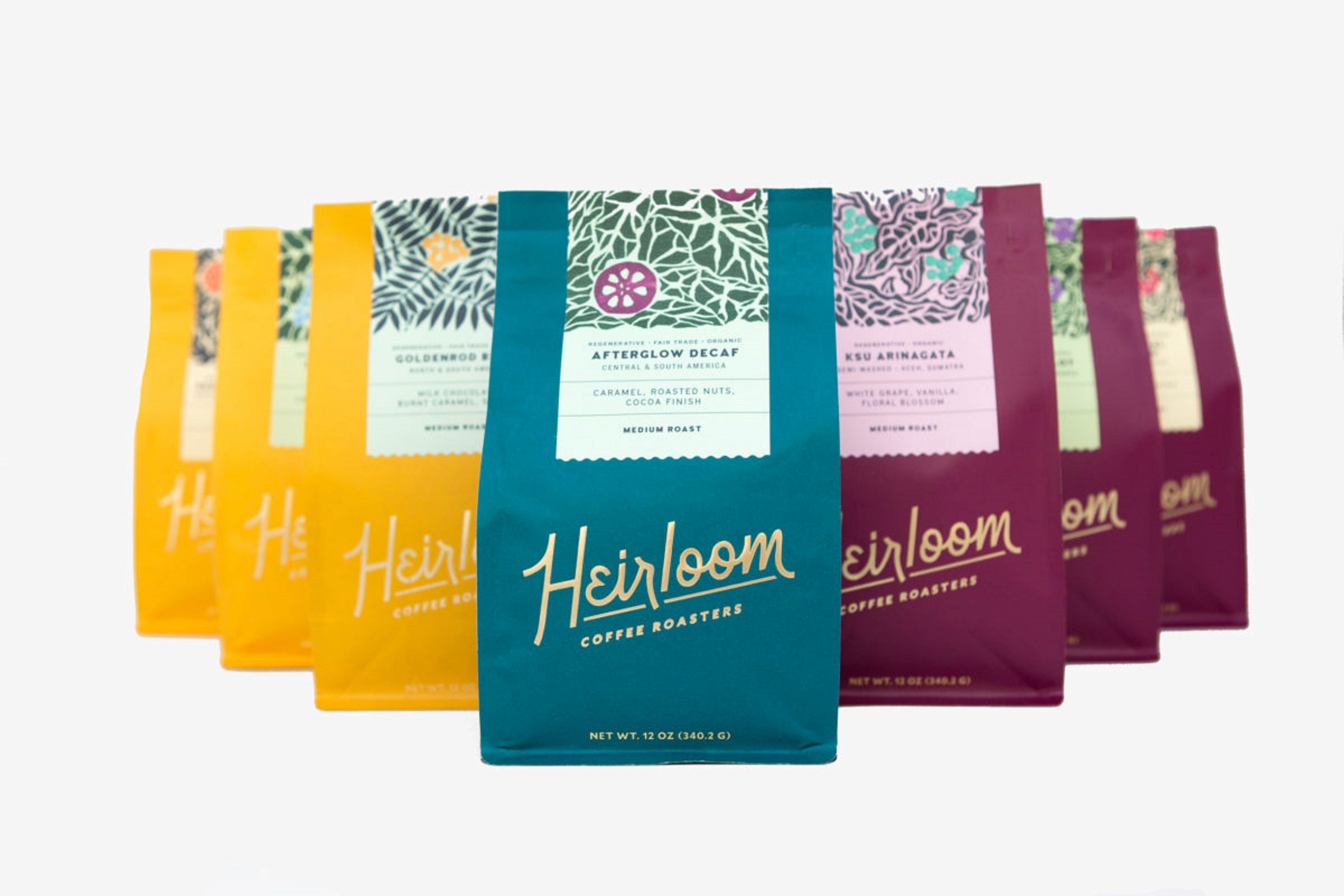
Heirloom Coffee's peaberry robusta beans are grown in the central highlands around Da Lat. Robusta grown at higher altitudes is a very tasty alternative to Robusta beans grown at lower altitudes. These beans are chocolate-like, creamy and rich with very low acidity. These coffee beans regularly win awards in the Italian espresso blend category. So, if you like espresso and rich, bold tasting beers, Dalat Peaberry is worth a try.
- Chest Brew
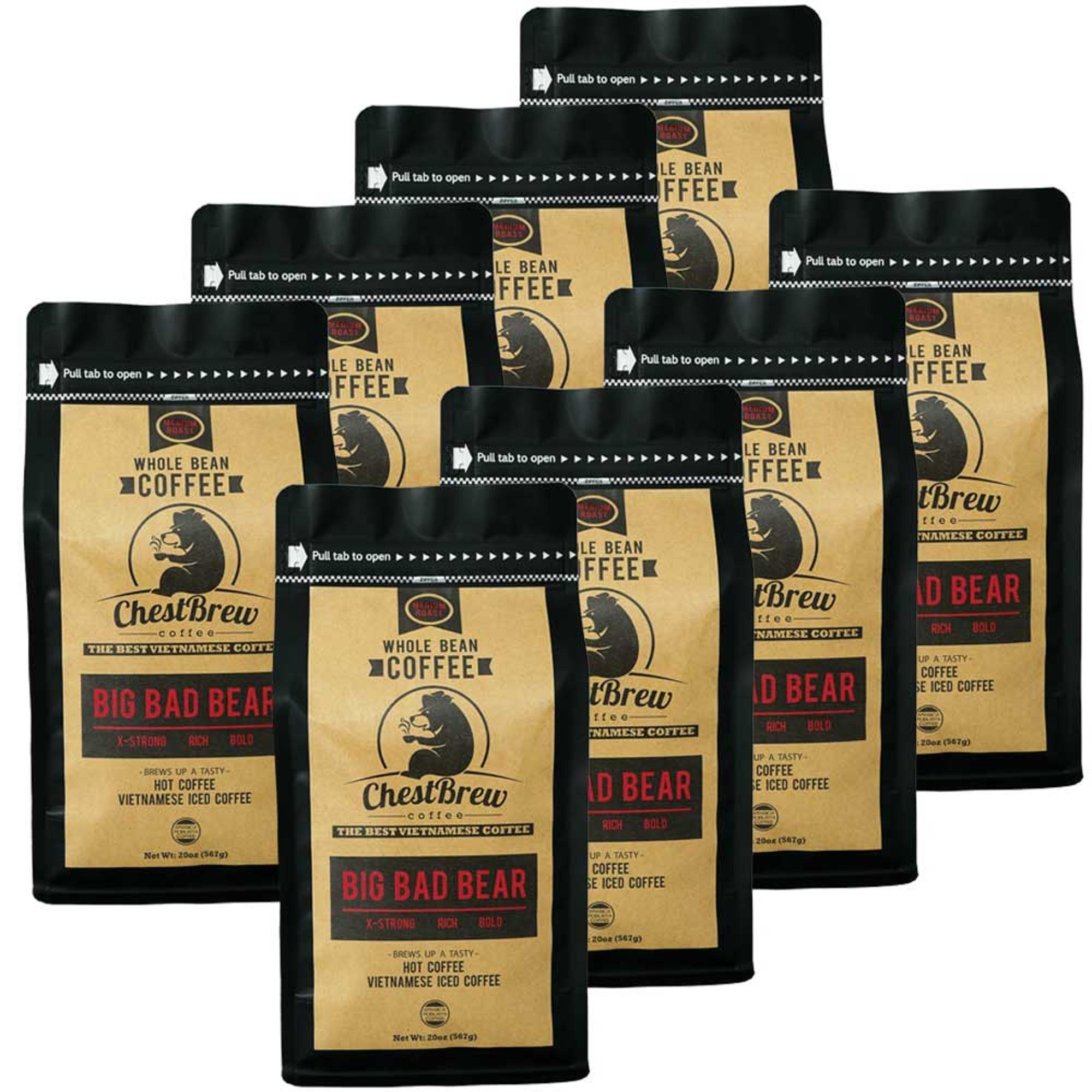
With Moon Bear Premium, Chestbrew specializes in authentic Vietnamese coffee beans, especially dark roasts. Moonbear coffee beans have a very strong taste and are perfect for Vietnamese iced coffee.
Where to harvest Vietnamese coffee
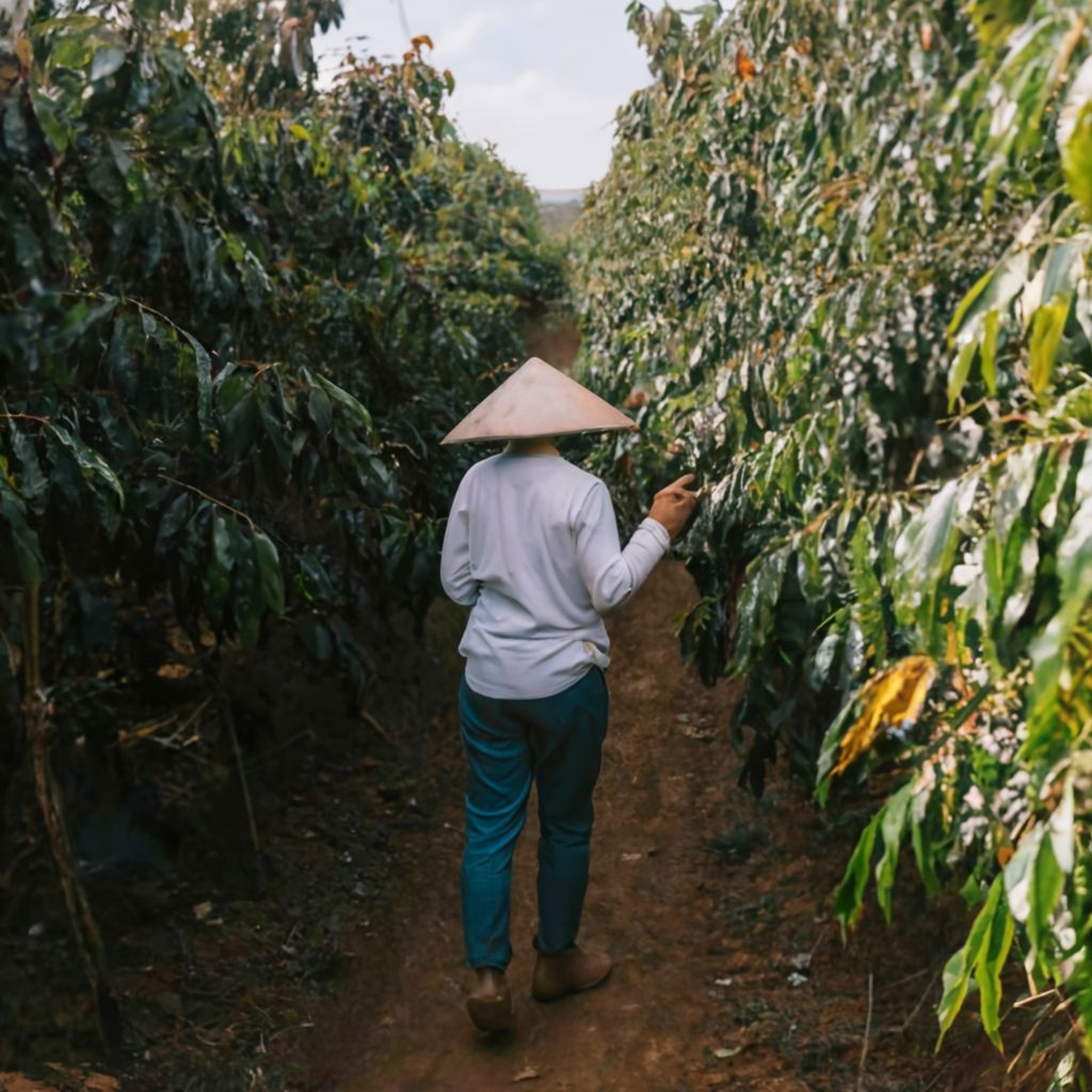
The French introduced coffee to Vietnam in 1857 during the colonial era. From then until today, Vietnam has grown to become the world's second largest coffee producer and the largest producer of Robusta coffee. Coffee was not without its challenges, as it was more difficult to grow than other crops, such as lowland rice. In the 1920s, France decided to open a colonization zone in the highlands, mainly the area around Buan Mu Thuot in Dak Lak province in the Central Highlands. The Vietnam War disrupted coffee production in the Central Highlands, an area where the industry was concentrated.
Even after the war, coffee production was limited by government regulations restricting private enterprise. It was not until 1986 that private enterprise was allowed again. After that decision, coffee production flourished. Today, Vietnam exports nearly 1 million tons of coffee. After rice, coffee is the second major agricultural product produced in Vietnam. The farms are extensive and are now scattered throughout the central highlands such as Dak Lak, Pleiku, Dalat and Kon Tum.
Table of contents
Types of Vietnamese Coffee and How to Make It
Culture
5 minutes
Mar 14, 2024


Vietnamese coffee is becoming increasingly popular among international travelers visiting Vietnam. Like beer and baguettes, Vietnamese coffee traces its origins back to colonial France.
Vietnamese coffee culture soon became a habit among the Vietnamese, who tried their own creative coffees such as coffee with egg yogurt or even fruit. Today, Vietnam is the world's second largest exporter of coffee and also the largest exporter of Robusta.
Introduction to Vietnamese Coffee

Vietnamese coffee actually means two things. Brewing method and traditional Vietnamese roast style. For example, using a pin drip filter, you can brew Italian-style roasted coffee beans in a Vietnamese-style way. But you can also brew a traditional Vietnamese roast with a foreign coffee machine.
In Vietnam, tradition dictates that Robusta coffee beans be roasted very darkly and elements such as salt, rice liqueur, butter, whiskey or fish sauce and sugar may be added. Adding additives can improve the flavor and flavor of bitter, hard Robusta beans. Flavors and aromas such as hazelnut and vanilla are regularly added.
Fillings such as beans, red beans, and roasted corn are common. They ensure that your strong coffee is slightly sweeter, stronger, and more profitable.
Types of Vietnamese Coffee
1. Filter coffee
- Vietnamese: Ca Phe Sua Nong (coffee with milk) Ca Phe Den Nong (black coffee)

If you go somewhere in Vietnam to drink coffee, you've probably seen a metal coffee filter (pin filter). Typically, ground coffee beans are roasted in butter and added to this filter along with hot water. The coffee then drips from the filter into the glass below. Waiting for the coffee to finally brew is part of the entire experience of drinking coffee.
2. Iced coffee
- Vietnamese: Ca Phe Sua Da (Iced Coffee with Milk) Ca phe da (Iced Black Coffee)

Another very popular Vietnamese coffee is iced coffee. Iced coffee is made the same way, first using a drip coffee filter. Once the coffee is brewed, mix the milk and coffee together and pour into a tall glass filled with ice.
3. Egg coffee
- Vietnamese: Ca Phe Trung

No, it's not coffee with eggs. This is a Vietnamese-style tiramisu made by adding dark coffee to the foam made by mixing egg yolk and condensed milk. Egg coffee, a Hanoi invention, was first created in the 1940s when milk was in short supply and egg yolks were an easy substitute.
4. Coconut Coffee
- Vietnamese: Ca phe cot dua

I'm not sure if this is a traditional coffee recipe. What is certain is that it has become popular among Vietnamese youth in recent years. Vietnamese coconut coffee is made in a shake form by mixing condensed milk, ice, and coconut milk. Some stores make it with brown coffee mixed with fresh milk and coconut milk.
5. Yogurt coffee
- Vietnamese: Sua chua ca phe

Yogurt, like coffee, was brought to Vietnam by the French during the colonial period and incorporated into local cuisine by the Vietnamese. Two French products were combined to create yogurt coffee. This drink is creamy and rich and can be served with a variety of toppings, including fresh fruit and fermented rice. This combination may sound strange, but it's surprisingly delicious when paired with a cup of black coffee.
6. Weasel Coffee
- Vietnamese: Ca phe chon

Weasel coffee is also known as civet coffee, kopi luwak, and even cat poop coffee. One of the most luxurious coffees in the world. Coffee beans are fed to weasels and later removed from their droppings for cleaning and processing. So you don't have to worry about poop getting in your coffee. This is important if you want to try coffee. The biggest difference is that the fermentation and flesh removal process takes place in the weasel's organs rather than machines.
This method of processing coffee beans for weasel coffee is also very controversial. Because the living conditions of these animals are not guaranteed everywhere. In some poorly managed farms, they are kept in small cages made of wire mesh, rarely fed coffee cherries instead of other foods such as insects, and live in filthy conditions.
Vietnamese coffee brand
- Trung Nguyen

The biggest and most famous coffee brand in Vietnam is Trung Nguyen Coffee. It is exported to more than 70 countries around the world. They serve a variety of coffees, each processed in a different way or blended with coffee beans. There are three main types: roasted coffee, instant coffee, and weasel coffee.
G7 Instant Coffee – Despite being an instant coffee, G7 Instant Coffee still has a very strong taste. Unlike freeze-drying, coffee powder is dried and extracted directly from coffee beans. This will give you a much stronger taste and authentic aroma. G7 is known as the highest quality instant coffee in many Asian countries.
Trung Nguyen Roasted Coffee – This ground coffee powder is a truly traditional coffee with a rich taste and aroma that can even be found on the streets of Vietnam. The best way to make this is to use a drip filter and add the condensed mixture for flavor.
Premium Blends and Gourmet Blends – These coffees in particular have made Trung Nguyen famous around the world and are also its best-selling coffee products. You can also find this coffee in many coffee shops in Vietnam and other countries.
- Heirloom Coffee

Heirloom Coffee's peaberry robusta beans are grown in the central highlands around Da Lat. Robusta grown at higher altitudes is a very tasty alternative to Robusta beans grown at lower altitudes. These beans are chocolate-like, creamy and rich with very low acidity. These coffee beans regularly win awards in the Italian espresso blend category. So, if you like espresso and rich, bold tasting beers, Dalat Peaberry is worth a try.
- Chest Brew

With Moon Bear Premium, Chestbrew specializes in authentic Vietnamese coffee beans, especially dark roasts. Moonbear coffee beans have a very strong taste and are perfect for Vietnamese iced coffee.
Where to harvest Vietnamese coffee

The French introduced coffee to Vietnam in 1857 during the colonial era. From then until today, Vietnam has grown to become the world's second largest coffee producer and the largest producer of Robusta coffee. Coffee was not without its challenges, as it was more difficult to grow than other crops, such as lowland rice. In the 1920s, France decided to open a colonization zone in the highlands, mainly the area around Buan Mu Thuot in Dak Lak province in the Central Highlands. The Vietnam War disrupted coffee production in the Central Highlands, an area where the industry was concentrated.
Even after the war, coffee production was limited by government regulations restricting private enterprise. It was not until 1986 that private enterprise was allowed again. After that decision, coffee production flourished. Today, Vietnam exports nearly 1 million tons of coffee. After rice, coffee is the second major agricultural product produced in Vietnam. The farms are extensive and are now scattered throughout the central highlands such as Dak Lak, Pleiku, Dalat and Kon Tum.
Table of contents
Table of contents
Types of Vietnamese Coffee and How to Make It
Culture
5 minutes
Mar 14, 2024


Vietnamese coffee is becoming increasingly popular among international travelers visiting Vietnam. Like beer and baguettes, Vietnamese coffee traces its origins back to colonial France.
Vietnamese coffee culture soon became a habit among the Vietnamese, who tried their own creative coffees such as coffee with egg yogurt or even fruit. Today, Vietnam is the world's second largest exporter of coffee and also the largest exporter of Robusta.
Introduction to Vietnamese Coffee

Vietnamese coffee actually means two things. Brewing method and traditional Vietnamese roast style. For example, using a pin drip filter, you can brew Italian-style roasted coffee beans in a Vietnamese-style way. But you can also brew a traditional Vietnamese roast with a foreign coffee machine.
In Vietnam, tradition dictates that Robusta coffee beans be roasted very darkly and elements such as salt, rice liqueur, butter, whiskey or fish sauce and sugar may be added. Adding additives can improve the flavor and flavor of bitter, hard Robusta beans. Flavors and aromas such as hazelnut and vanilla are regularly added.
Fillings such as beans, red beans, and roasted corn are common. They ensure that your strong coffee is slightly sweeter, stronger, and more profitable.
Types of Vietnamese Coffee
1. Filter coffee
- Vietnamese: Ca Phe Sua Nong (coffee with milk) Ca Phe Den Nong (black coffee)

If you go somewhere in Vietnam to drink coffee, you've probably seen a metal coffee filter (pin filter). Typically, ground coffee beans are roasted in butter and added to this filter along with hot water. The coffee then drips from the filter into the glass below. Waiting for the coffee to finally brew is part of the entire experience of drinking coffee.
2. Iced coffee
- Vietnamese: Ca Phe Sua Da (Iced Coffee with Milk) Ca phe da (Iced Black Coffee)

Another very popular Vietnamese coffee is iced coffee. Iced coffee is made the same way, first using a drip coffee filter. Once the coffee is brewed, mix the milk and coffee together and pour into a tall glass filled with ice.
3. Egg coffee
- Vietnamese: Ca Phe Trung

No, it's not coffee with eggs. This is a Vietnamese-style tiramisu made by adding dark coffee to the foam made by mixing egg yolk and condensed milk. Egg coffee, a Hanoi invention, was first created in the 1940s when milk was in short supply and egg yolks were an easy substitute.
4. Coconut Coffee
- Vietnamese: Ca phe cot dua

I'm not sure if this is a traditional coffee recipe. What is certain is that it has become popular among Vietnamese youth in recent years. Vietnamese coconut coffee is made in a shake form by mixing condensed milk, ice, and coconut milk. Some stores make it with brown coffee mixed with fresh milk and coconut milk.
5. Yogurt coffee
- Vietnamese: Sua chua ca phe

Yogurt, like coffee, was brought to Vietnam by the French during the colonial period and incorporated into local cuisine by the Vietnamese. Two French products were combined to create yogurt coffee. This drink is creamy and rich and can be served with a variety of toppings, including fresh fruit and fermented rice. This combination may sound strange, but it's surprisingly delicious when paired with a cup of black coffee.
6. Weasel Coffee
- Vietnamese: Ca phe chon

Weasel coffee is also known as civet coffee, kopi luwak, and even cat poop coffee. One of the most luxurious coffees in the world. Coffee beans are fed to weasels and later removed from their droppings for cleaning and processing. So you don't have to worry about poop getting in your coffee. This is important if you want to try coffee. The biggest difference is that the fermentation and flesh removal process takes place in the weasel's organs rather than machines.
This method of processing coffee beans for weasel coffee is also very controversial. Because the living conditions of these animals are not guaranteed everywhere. In some poorly managed farms, they are kept in small cages made of wire mesh, rarely fed coffee cherries instead of other foods such as insects, and live in filthy conditions.
Vietnamese coffee brand
- Trung Nguyen

The biggest and most famous coffee brand in Vietnam is Trung Nguyen Coffee. It is exported to more than 70 countries around the world. They serve a variety of coffees, each processed in a different way or blended with coffee beans. There are three main types: roasted coffee, instant coffee, and weasel coffee.
G7 Instant Coffee – Despite being an instant coffee, G7 Instant Coffee still has a very strong taste. Unlike freeze-drying, coffee powder is dried and extracted directly from coffee beans. This will give you a much stronger taste and authentic aroma. G7 is known as the highest quality instant coffee in many Asian countries.
Trung Nguyen Roasted Coffee – This ground coffee powder is a truly traditional coffee with a rich taste and aroma that can even be found on the streets of Vietnam. The best way to make this is to use a drip filter and add the condensed mixture for flavor.
Premium Blends and Gourmet Blends – These coffees in particular have made Trung Nguyen famous around the world and are also its best-selling coffee products. You can also find this coffee in many coffee shops in Vietnam and other countries.
- Heirloom Coffee

Heirloom Coffee's peaberry robusta beans are grown in the central highlands around Da Lat. Robusta grown at higher altitudes is a very tasty alternative to Robusta beans grown at lower altitudes. These beans are chocolate-like, creamy and rich with very low acidity. These coffee beans regularly win awards in the Italian espresso blend category. So, if you like espresso and rich, bold tasting beers, Dalat Peaberry is worth a try.
- Chest Brew

With Moon Bear Premium, Chestbrew specializes in authentic Vietnamese coffee beans, especially dark roasts. Moonbear coffee beans have a very strong taste and are perfect for Vietnamese iced coffee.
Where to harvest Vietnamese coffee

The French introduced coffee to Vietnam in 1857 during the colonial era. From then until today, Vietnam has grown to become the world's second largest coffee producer and the largest producer of Robusta coffee. Coffee was not without its challenges, as it was more difficult to grow than other crops, such as lowland rice. In the 1920s, France decided to open a colonization zone in the highlands, mainly the area around Buan Mu Thuot in Dak Lak province in the Central Highlands. The Vietnam War disrupted coffee production in the Central Highlands, an area where the industry was concentrated.
Even after the war, coffee production was limited by government regulations restricting private enterprise. It was not until 1986 that private enterprise was allowed again. After that decision, coffee production flourished. Today, Vietnam exports nearly 1 million tons of coffee. After rice, coffee is the second major agricultural product produced in Vietnam. The farms are extensive and are now scattered throughout the central highlands such as Dak Lak, Pleiku, Dalat and Kon Tum.
Table of contents
Types of Vietnamese Coffee and How to Make It
Culture
5 minutes
Mar 14, 2024


Vietnamese coffee is becoming increasingly popular among international travelers visiting Vietnam. Like beer and baguettes, Vietnamese coffee traces its origins back to colonial France.
Vietnamese coffee culture soon became a habit among the Vietnamese, who tried their own creative coffees such as coffee with egg yogurt or even fruit. Today, Vietnam is the world's second largest exporter of coffee and also the largest exporter of Robusta.
Introduction to Vietnamese Coffee

Vietnamese coffee actually means two things. Brewing method and traditional Vietnamese roast style. For example, using a pin drip filter, you can brew Italian-style roasted coffee beans in a Vietnamese-style way. But you can also brew a traditional Vietnamese roast with a foreign coffee machine.
In Vietnam, tradition dictates that Robusta coffee beans be roasted very darkly and elements such as salt, rice liqueur, butter, whiskey or fish sauce and sugar may be added. Adding additives can improve the flavor and flavor of bitter, hard Robusta beans. Flavors and aromas such as hazelnut and vanilla are regularly added.
Fillings such as beans, red beans, and roasted corn are common. They ensure that your strong coffee is slightly sweeter, stronger, and more profitable.
Types of Vietnamese Coffee
1. Filter coffee
- Vietnamese: Ca Phe Sua Nong (coffee with milk) Ca Phe Den Nong (black coffee)

If you go somewhere in Vietnam to drink coffee, you've probably seen a metal coffee filter (pin filter). Typically, ground coffee beans are roasted in butter and added to this filter along with hot water. The coffee then drips from the filter into the glass below. Waiting for the coffee to finally brew is part of the entire experience of drinking coffee.
2. Iced coffee
- Vietnamese: Ca Phe Sua Da (Iced Coffee with Milk) Ca phe da (Iced Black Coffee)

Another very popular Vietnamese coffee is iced coffee. Iced coffee is made the same way, first using a drip coffee filter. Once the coffee is brewed, mix the milk and coffee together and pour into a tall glass filled with ice.
3. Egg coffee
- Vietnamese: Ca Phe Trung

No, it's not coffee with eggs. This is a Vietnamese-style tiramisu made by adding dark coffee to the foam made by mixing egg yolk and condensed milk. Egg coffee, a Hanoi invention, was first created in the 1940s when milk was in short supply and egg yolks were an easy substitute.
4. Coconut Coffee
- Vietnamese: Ca phe cot dua

I'm not sure if this is a traditional coffee recipe. What is certain is that it has become popular among Vietnamese youth in recent years. Vietnamese coconut coffee is made in a shake form by mixing condensed milk, ice, and coconut milk. Some stores make it with brown coffee mixed with fresh milk and coconut milk.
5. Yogurt coffee
- Vietnamese: Sua chua ca phe

Yogurt, like coffee, was brought to Vietnam by the French during the colonial period and incorporated into local cuisine by the Vietnamese. Two French products were combined to create yogurt coffee. This drink is creamy and rich and can be served with a variety of toppings, including fresh fruit and fermented rice. This combination may sound strange, but it's surprisingly delicious when paired with a cup of black coffee.
6. Weasel Coffee
- Vietnamese: Ca phe chon

Weasel coffee is also known as civet coffee, kopi luwak, and even cat poop coffee. One of the most luxurious coffees in the world. Coffee beans are fed to weasels and later removed from their droppings for cleaning and processing. So you don't have to worry about poop getting in your coffee. This is important if you want to try coffee. The biggest difference is that the fermentation and flesh removal process takes place in the weasel's organs rather than machines.
This method of processing coffee beans for weasel coffee is also very controversial. Because the living conditions of these animals are not guaranteed everywhere. In some poorly managed farms, they are kept in small cages made of wire mesh, rarely fed coffee cherries instead of other foods such as insects, and live in filthy conditions.
Vietnamese coffee brand
- Trung Nguyen

The biggest and most famous coffee brand in Vietnam is Trung Nguyen Coffee. It is exported to more than 70 countries around the world. They serve a variety of coffees, each processed in a different way or blended with coffee beans. There are three main types: roasted coffee, instant coffee, and weasel coffee.
G7 Instant Coffee – Despite being an instant coffee, G7 Instant Coffee still has a very strong taste. Unlike freeze-drying, coffee powder is dried and extracted directly from coffee beans. This will give you a much stronger taste and authentic aroma. G7 is known as the highest quality instant coffee in many Asian countries.
Trung Nguyen Roasted Coffee – This ground coffee powder is a truly traditional coffee with a rich taste and aroma that can even be found on the streets of Vietnam. The best way to make this is to use a drip filter and add the condensed mixture for flavor.
Premium Blends and Gourmet Blends – These coffees in particular have made Trung Nguyen famous around the world and are also its best-selling coffee products. You can also find this coffee in many coffee shops in Vietnam and other countries.
- Heirloom Coffee

Heirloom Coffee's peaberry robusta beans are grown in the central highlands around Da Lat. Robusta grown at higher altitudes is a very tasty alternative to Robusta beans grown at lower altitudes. These beans are chocolate-like, creamy and rich with very low acidity. These coffee beans regularly win awards in the Italian espresso blend category. So, if you like espresso and rich, bold tasting beers, Dalat Peaberry is worth a try.
- Chest Brew

With Moon Bear Premium, Chestbrew specializes in authentic Vietnamese coffee beans, especially dark roasts. Moonbear coffee beans have a very strong taste and are perfect for Vietnamese iced coffee.
Where to harvest Vietnamese coffee

The French introduced coffee to Vietnam in 1857 during the colonial era. From then until today, Vietnam has grown to become the world's second largest coffee producer and the largest producer of Robusta coffee. Coffee was not without its challenges, as it was more difficult to grow than other crops, such as lowland rice. In the 1920s, France decided to open a colonization zone in the highlands, mainly the area around Buan Mu Thuot in Dak Lak province in the Central Highlands. The Vietnam War disrupted coffee production in the Central Highlands, an area where the industry was concentrated.
Even after the war, coffee production was limited by government regulations restricting private enterprise. It was not until 1986 that private enterprise was allowed again. After that decision, coffee production flourished. Today, Vietnam exports nearly 1 million tons of coffee. After rice, coffee is the second major agricultural product produced in Vietnam. The farms are extensive and are now scattered throughout the central highlands such as Dak Lak, Pleiku, Dalat and Kon Tum.
Table of contents
Vietnam Insider.
Welcome to our Connect with Us page! We're thrilled to have you here and excited to connect with fellow Vietnam travel enthusiasts. Whether you have questions, suggestions, or simply want to share your own Vietnam travel experiences, we're all ears! Feel free to reach out to us through the contact form below or connect with us on our social media channels. Let's embark on this incredible journey together and explore the wonders of Vietnam!
Trending
Newsletter
Subscribe to our newsletter for a curated dose of design inspiration, practical tips, and exclusive content delivered straight to your inbox.
© 2024 Vietnam Insider.
vietnaminsidertips@gmail.com
Vietnam Insider.
Welcome to our Connect with Us page! We're thrilled to have you here and excited to connect with fellow Vietnam travel enthusiasts. Whether you have questions, suggestions, or simply want to share your own Vietnam travel experiences, we're all ears! Feel free to reach out to us through the contact form below or connect with us on our social media channels. Let's embark on this incredible journey together and explore the wonders of Vietnam!
Trending
Newsletter
Subscribe to our newsletter for a curated dose of design inspiration, practical tips, and exclusive content delivered straight to your inbox.
© 2024 Vietnam Insider.
vietnaminsidertips@gmail.com
Vietnam Insider.
Welcome to our Connect with Us page! We're thrilled to have you here and excited to connect with fellow Vietnam travel enthusiasts. Whether you have questions, suggestions, or simply want to share your own Vietnam travel experiences, we're all ears! Feel free to reach out to us through the contact form below or connect with us on our social media channels. Let's embark on this incredible journey together and explore the wonders of Vietnam!
Trending
Newsletter
Subscribe to our newsletter for a curated dose of design inspiration, practical tips, and exclusive content delivered straight to your inbox.
© 2024 Vietnam Insider.
vietnaminsidertips@gmail.com

